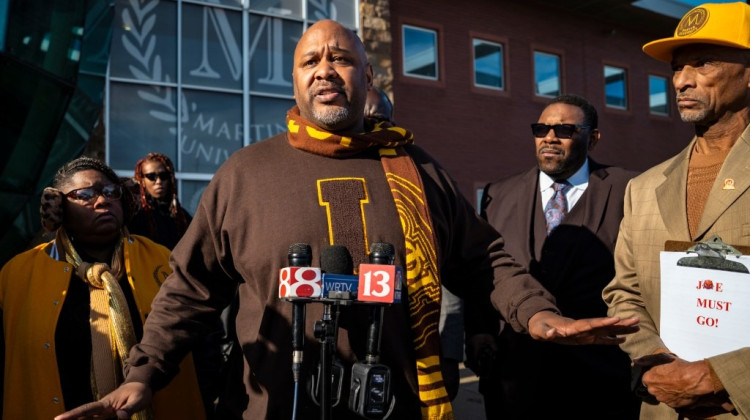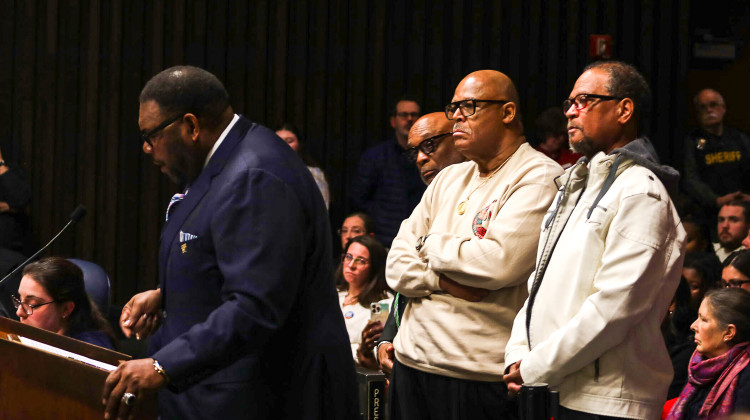
A soon-to-end pilot program between IndyGo and Indianapolis Public Schools provides access to more than 5,000 students in grades 9-12, through steeply discounted passes paid for by the district.
WFYI NewsIndianapolis Public Schools leaders are proposing a reduction in bus service for some students next academic year, in face of an expected $18 million budget shortfall.
Under the plan, around 4,100 students would be required to walk to their neighborhood school. Additionally, around 600 high school students would have to use IndyGo for their sole transportation, instead of a yellow bus.
Superintendent Aleissa Johnson says the district aims to save up to $7 million with this plan and other transportation changes, including route consolidation. Johnson's aim is to avoid cuts that will impact student academics.
“If we go after some of the opportunities in transportation, we can ensure that we are not negatively impacting the classroom environment,” Johnson said Wednesday.
The district’s budget shortfall is fueled by an expected decline in the state's per-student funding level at the district and a slight drop in enrollment.
Transportation has long been one of the district’s most challenging areas to keep cost down. Before the pandemic, the transportation budget made up about 10%, or more than $40 million, of the IPS budget. In past years, the district spent $7 million to $10 million more on transportation annually than the amount of funding received from local property taxes to pay for bussing.
The high cost is due, in part, to the district providing transportation to students who chose to attend a magnet or other non-traditional school rather than their neighborhood school.
The district set up a website to explain the changes here. Some of the proposed transportation reductions include:
Walk Zone Enforcement: IPS implemented “walk zones” around schools in 1998 but enforcement is inconsistent, due to dangerous roads and lack of crossing guards. That will change next year when elementary students who live within 1 mile of their assigned school will not receive bus service. The same goes for middle school students who live within 1.25 miles and high school students who live within 1.5 miles from their school buildings. The district will increase the number of crossing guards across the city to help students transverse busy intersections and dangerous roads.
Exceptions will be made, for some students, including those with special needs and students who are experiencing homelessness.
This academic year, 13 schools began enforcing walk zones with the help of added crossing guards.
IndyGo Partnership: A soon-to-end pilot program between IPS and the city's public bus transit system provides access to more than 5,000 students in grades 9-12, through steeply discounted passes paid for by the district. District leaders hoped this could become a permanent solution to save millions of dollars by eventually eliminating yellow buses for high school students.
Now, the future of the partnership is uncertain, after Statehouse lawmakers introduced legislation to limit funding for IndyGo in 2022. If that happens, IndyGo may be unable to provide IPS discounted passes for students.
Because of the uncertainty, IPS is planning for only 605 students to use IndyGo as their only transportation source to school in the 2021-22 school year. Students who live near city bus stops and don’t require a transfer to get to school, will be selected for the change.
The IPS Board of School Commissioners will vote on the IndyGo proposal at its regular public meeting April 29.
 DONATE
DONATE







 Support WFYI. We can't do it without you.
Support WFYI. We can't do it without you.